Windows Video App Can’t Play Error 0xc1010103
The 0xc1010103 occurs when Windows 10 users attempt to play or cast (to an external device) .MKV video files using the default Video app. The error code is signalling that the item is in a format that’s not supported by Windows, even though .MKV files are officially supported on Windows 10.
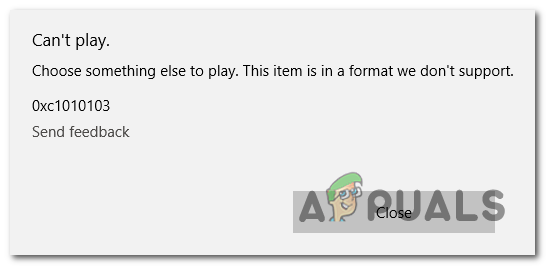
What’s causing the 0xc1010103 error code?
- Glitched caused by temp folder – If you recently installed several different Windows updates, it’s possible that you’re seeing this problem due to a temporary glitched caused by some files in the temp file. In this case, the issue will go away by itself when your OS will clear that folder, but you can speed up the process by running the Video Playback troubleshooter.
- Corrupted / Outdated GPU driver – Another real possibility that will cause this behaviour is an improper or corrupted GPU driver. If this scenario is applicable, you can fix the issue by booting your computer in Safe Mode and uninstalling the active display adapters and re-installing the latest versions.
Method 1: Running the Video Playback troubleshooter
If you recently installed a Windows update, it’s possible that the issue is occurring due to a common glitch that is originating from the temp folder of the Videos app. Several windows users that were also encountering this problem have confirmed that they were able to fix it by running the Video Playback troubleshooter and restarting their computer.
If this scenario is applicable, it’s likely that the situation is already covered by a repair strategy, so the utility will fix the issue automatically.
Here’s a quick guide on running the video playback troubleshooter in order to fix the 0xc1010103 on Windows 10:
- Open up a Run dialogue box by pressing Windows key + R. Next, type ‘ms-settings:troubleshoot” and press Enter to open up the Troubleshooting tab of the Settings tab.
- Once you’re inside the Troubleshooting window, move over to the right-hand section of the window and locate the Find and fix other problems section.
- When you get there, click on Video Playback, then click on Run the troubleshooter from the newly appeared context menu to launch the utility.
- After you manage to start the utility, wait until the initial scan is complete. If a recommended fix is identified, click on Apply this fix to apply the suitable repair strategy.
- Once the procedure is complete, reboot your computer and see if the issue is resolved at the next startup sequence.
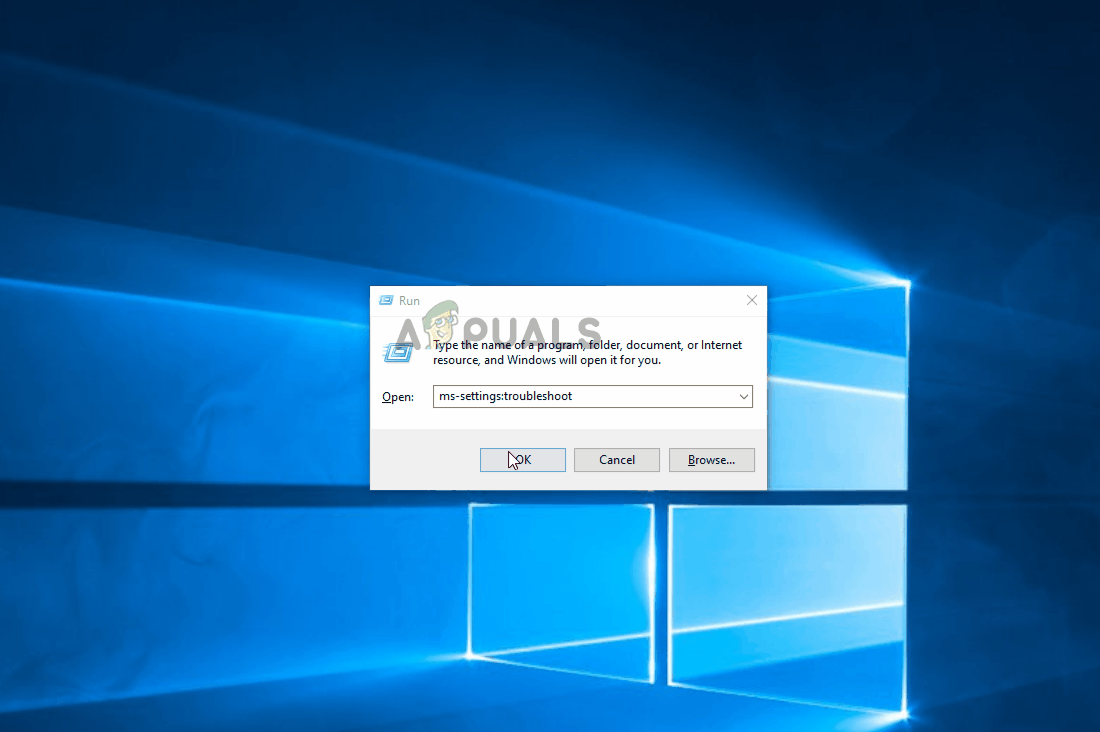
If the same problem is still occurring, move down to the next potential fix below.
Method 2: Update GPU drivers
If you’re encountering the 0xc1010103 consistently (with every type of file, not just .MKVs) it’s likely that you actually have a problem with your GPU drivers. This issue is typically encountered on laptop configurations with both a dedicated and an integrated GPU.
Several affected users that encountered the 0xc1010103 error with every video they tried to play eventually managed to fix the issue by boosting their computer in Safe Mode and uninstalling the active Display drivers, then replacing them with the latest version using the proprietary software.
Here’s a quick guide on how to do this on Windows 10:
- Press Windows key + R to open up a Run dialogue box. Next, type ‘ms-settings:recovery‘ and hit Enter to open up the Recovery tab of the Update & Security tab.
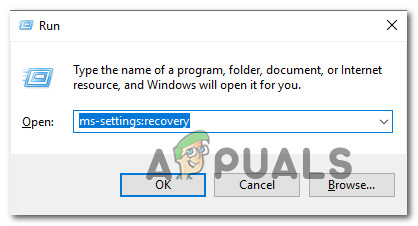
Accessing the Recovery tab - Once you manage to get inside the Recovery tab, click on the Restart now button (under Advanced startup). After you confirm the operation, your machine will restart directly into the Advanced Startup menu.

Accessing the advanced startup menu - Once the machine boots back into the Advanced Startup menu, navigate through the Troubleshoot > Advanced Options and click on Startup Settings menu.
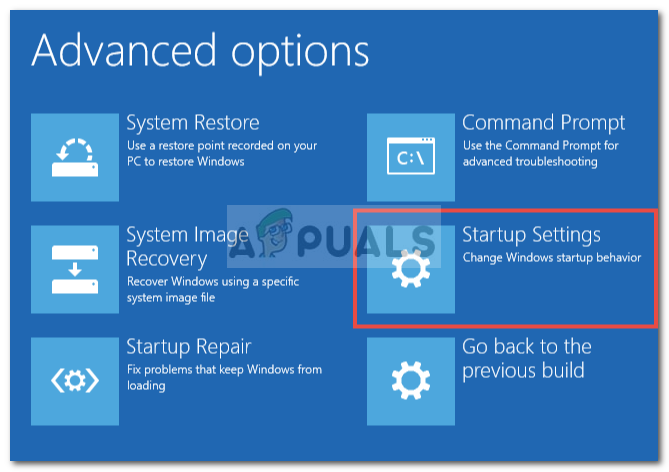
Windows 10 Advanced Options - Once you select the Startup Settings options, your computer will restart once more, but this time, it will open directly the Startup Settings menu. Once you see the Startup Settings menu, press the F4 key or 4 key to start your PC in Safe Mode.

Enable Safe Mode in Startup Settings - As soon as you do this, your computer will boot directly into Safe mode. Once the startup sequence is complete, press Windows key + R to open up a Run dialogue box. Next, type ‘devmgmt.msc’ and press Enter to open up Device Manager.

Running Device Manager - Once you’re inside Device Manager, expand the Display adapters menu and uninstall all graphics drivers by right-clicking them and choosing Uninstall device from the newly appeared context menu.
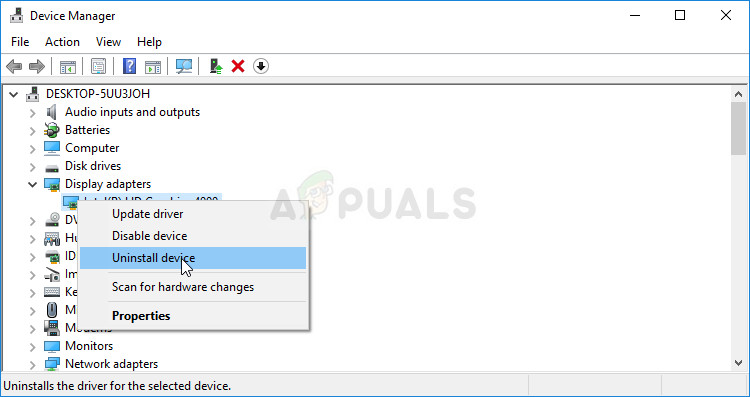
Uninstalling the graphics adapter Note: If you are using a laptop with both an integrated and a dedicated GPU, uninstall both.
- Once the device driver is uninstalled, close the Device Manager utility. Next, press Windows key + R once again to open another Run box. This time, type ‘appwiz.cpl’ and press Enter to open up the Programs and Features screen.

Typing in “appwiz.cpl” in the Run prompt - Scroll down through the list of installed applications and uninstall anything that is signed by your GPU manufacturer (Nvidia, AMD or Intel Graphics). You can see it all grouped together by clicking on the Publisher column. To uninstall each driver, right-click on each entry and choose Uninstall from the context menu. Then, follow the on-screen prompts to complete the uninstall.

Uninstall all GPU related software - Once every relevant driver is uninstalled, restart your computer to boot back in normal mode, then wait for the next startup sequence to complete.
- Next, visit the download page associated with your GPU manufacturer and download the latest driver version available for your particular GPU model. Here’s a list of relevant links:
Nvidia’s Download Page
AMD’s Download Page
Intel Graphics Download Page - Download the appropriate driver according to your GPU model and OS version, then reboot your computer once again.
- Attempt to play the videos that were previously failing with the 0xc1010103 error and see if the issue is now resolved.




